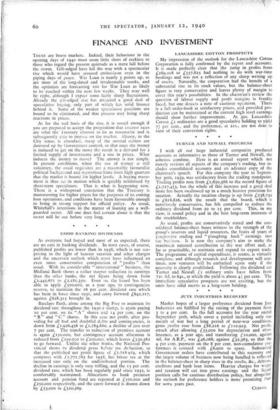GOOD BANKING DIVIDENDS As everyone had hoped and most of
us expected, there are no cuts in banking dividends. In most cases, of course, published profits are lower than in 1938, which is not sur- prising in the light of heavier taxation and other charges and the uncertain outlook which must have influenced an even more conservative computation of " profits " than usual. With its considerable " international " business, the Midland Bank shows a rather steeper reduction in earnings than the other banks, the net figure being down from £2,445,671 to £2,181,350. Even so, the board has been able to apply £500,000, as a year ago, to contingencies reserve, to maintain the 16 per cent. dividend rate which has been in force since 1931, and carry forward £642,217, against £628,315 brought in.
Barclays Bank, alone among the Big Five to maintain its dividend rate throughout the 1930-2 slump, is again paying 10 per cent. on its " A " shares and 14 per cent. on the " B " and " C " shares. In this case net profit, after pro- viding for all bad and doubtful debts and contingencies, is down from £1,926,458 to £1,784,880, a decline of just over 7 per cent. The transfer to reduction of premises account is again Li5o,000, but contingency account allocation is reduced from £250;000 to £200,000, which leaves £530,582 to go forward. Unlike the other banks, the National Pro- vincial shows its dividend gross before tax deduction, so that the published net profit figure of £I,718.934, which compares with £1,771,785 for 1938, has borne tax at the increased rate only on the undistributed portion. The decline in earnings is only very trifling, and the 15 per cent. dividend rate, which has been regularly paid since 1932, is comfortably maintained. Allocations to bank premises account and pension fund are repeated at £100,000 and £250,000 respectively, and the carry forward is drawn down by £53,000 to £520,569.


































 Previous page
Previous page